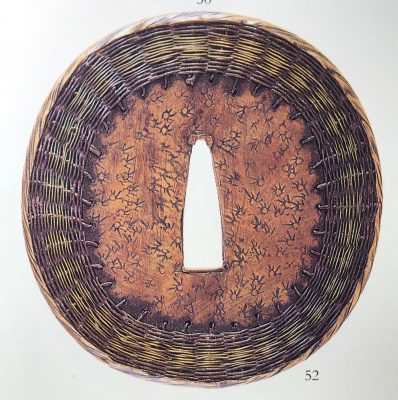
Compton Collection, vol. 2, p. 26-27, №52.
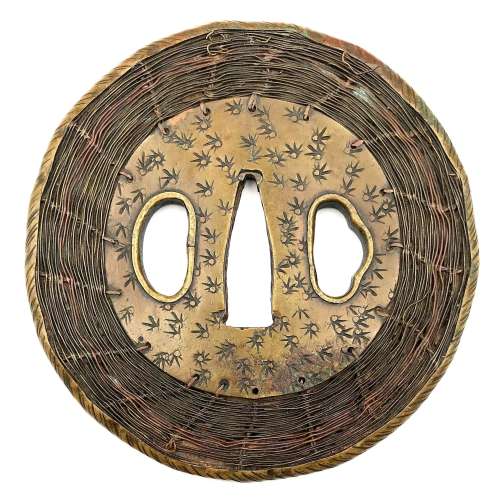

Compton Collection, vol. 2, p. 26-27, №52.


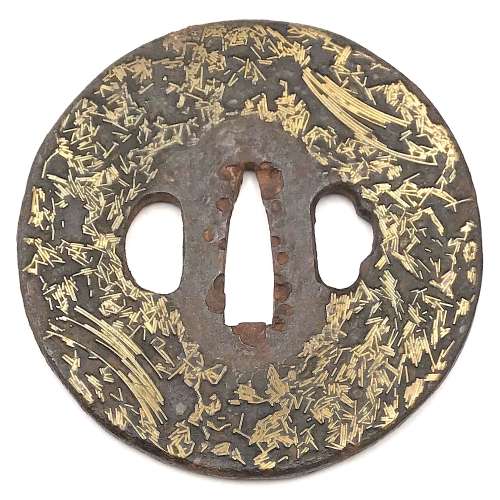

 See also tsuba TSU-0211 in this collection:
See also tsuba TSU-0211 in this collection:


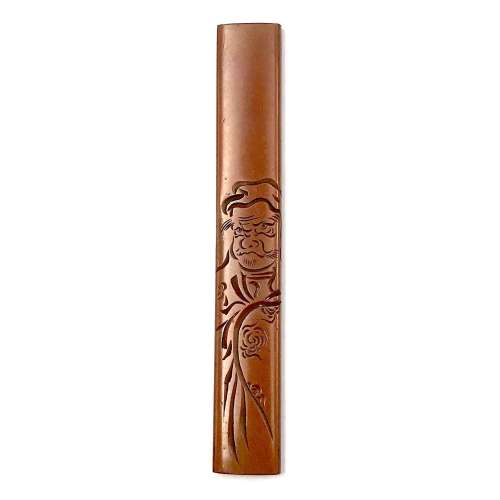

 Though we have to admit that the example from Catalog #7 by Robert E. Haynes looks much stronger.
Though we have to admit that the example from Catalog #7 by Robert E. Haynes looks much stronger.
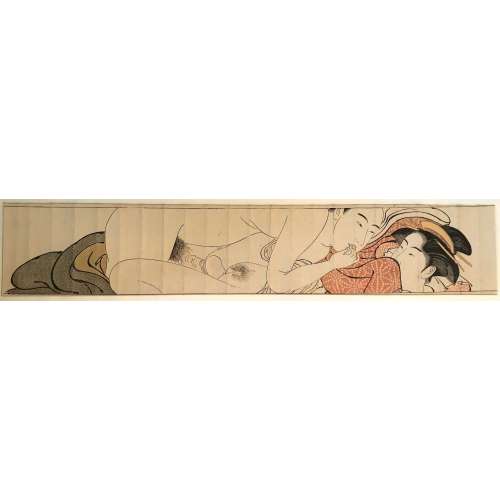

Picture № 6. (31d in LIB-2971.2022)

Picture № 9.

Picture № 11. (31g in LIB-2971.2022)

 Image from Asian Art Museum in San Francisco:
Image from Asian Art Museum in San Francisco:
Masanobu’s mitate wittily evokes an episode known as “Bodhidharma crossing the Yangzi River on a reed” (Royō Daruma). According to legend, the river crossing occurred en route to the Shaolin monastery, where Bodhidharma sat facing a wall for nine years without speaking. While serious interpretations abound in Chinese and Japanese paintings, popular prints of the Edo period often playfully substituted a beautiful woman for the monk. This parodic version was reportedly invented in response to a courtesan’s comment that she was more enlightened than Bodhidharma because she had spent ten years sitting, on display in a brothel.An interesting article about this particular design is published at UKIYO-E.ORG BLOG. Though, the design is erroneously attributed to Harunobu. We see that Bunchō was quite fascinated by the idea of crossing a water obstacle with the help of an unsuitable means of transportation:

Female Daruma Riding a Mushroom. MFA # 21.4758.


Katsukawa Shun'ei. The Actor Ichikawa Monnosuke II in an Aragoto Role. LACME.

Actor Ichikawa Monnosuke II as Date no Yosaku Artist Tôshûsai Sharaku (Japanese, active 1794–1795), Publisher Tsutaya Jûzaburô (Kôshodô) (Japanese) 1794 (Kansei 6), 5th month. MFA.

Ippitsusai Bunchô. Actor Ichikawa Monnosuke II as Tsunewakamaru. Play: Iro Moyô Aoyagi Soga Theater: Nakamura. MFA.

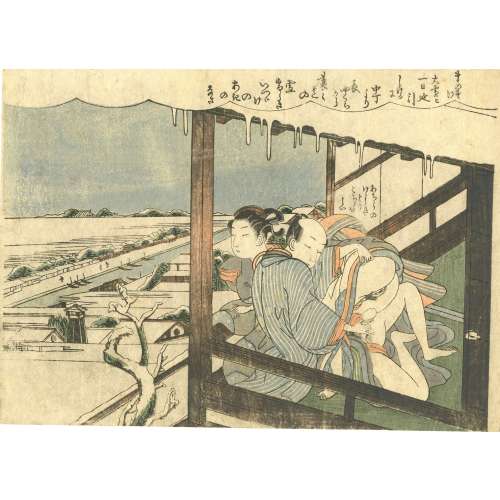


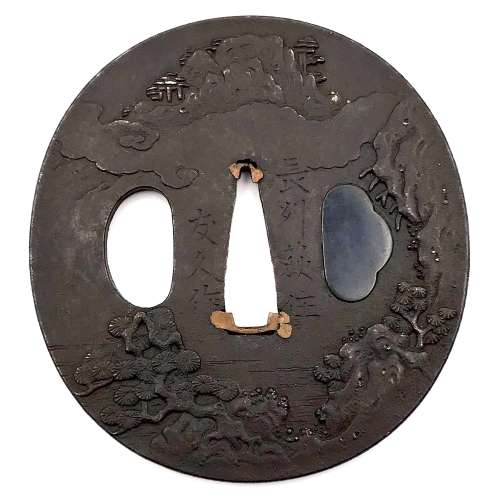
Iron tsuba of oval form carved with a landscape motif. Kogai-hitsu-ana plugged with shakudo. Sekigane of copper.
Signed: Chōshū Hagi-jū Tomohisa saku (長州萩住友久作).
Tomohisa, adopted son of Rokurō'emon, was 3rd generation master of Kawaji School from Hagi in Nagato (Chōshū), lived 1687-1743 [M. Sesko 'Genealogies', page 117].
Edo period, circa 1700. Dimensions: 71.1 x 66.8 x 2.9 mm For his adopted son Hisatsugu work see TSU-0103 in this collection.

The Japanese Pillar Print. Hashira-e. Jacob Pins. Foreword by Roger Keyes. Robert G. Sawers Publishing, London, 1982 [LIB-1543.2018 in this collection] -> page 262 №703: A young woman dreaming of rape and robbery. 1783. Hirano.
MFA: ACCESSION NUMBER 21.5546: Young Woman Music Teacher Dreaming of a Robbery [追剥の夢を見る三味線師匠]. Edo period, about 1783 (Tenmei 3). Artist Torii Kiyonaga (1752–1815), Publisher Nishimuraya Yohachi (Eijudô). Harvard Museums Object Number 1916.586: Female Musician Dreaming of Robbery. Edo period, circa 1783. Torii Kiyonaga, Japanese (1752 - 1815) . Published by Nishimuraya Yohachi.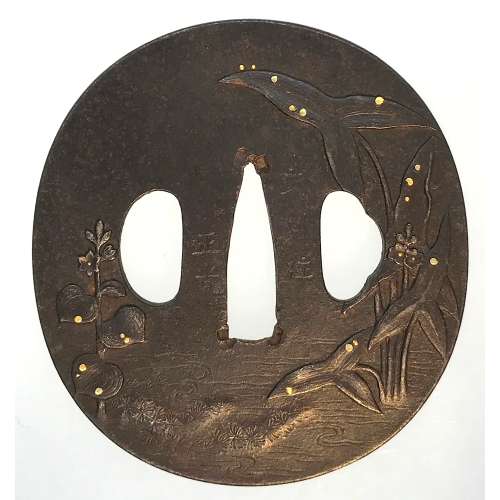
An iron tsuba of oval form decorated with a water plantain (omodaka) carved in low relief and water drops inlaid in gold.
Signed: Bushū jū Masamitsu.
Bushū-Itō school.Height: 71.8; Width: 67.3; Thickness: 3.6; Weight: 96 g.
Mid to late Edo period; 18th-19th century.
There were several tsuba artists with the name of Masamitsu. The one who worked with iron and spelled [正光] is mentioned at Markus Sesko's 'Genealogies' on page 106 in Akasaka School of Edo section as Masamitsu Gorōbei , student of Tadatoki, 4th generation Akasaka master. The name is not mentioned at Torigoye/Haynes 'Tsuba. An Aesthetic Study' in the list of Bushū-Itō family masters on page 181.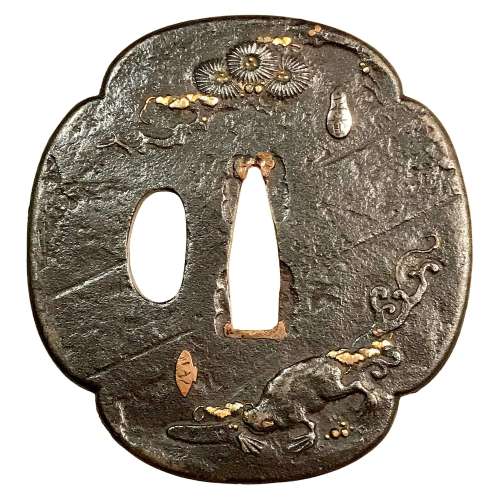
Iron tsuba of mokkō-form with a pine and a frog on the face and a snail on the back, carved and inlaid with gold. Each figurative element of the design is signed on three inlaid cartouches: Masaharu (正春), Kazuyuki (一之), and Yoshikazu (良一) [read by Markus Sesko]. Snake, snail, and frog together make a design called "SANSUKUMI" - Three Cringing Ones [Merrily Baird]. The snail can poison the snake, the frog eats the snail, and the snake eats the frog. It's unclear whether the pine replaces the snake on this tsuba, or the snake is hiding in the pine? Anyway, the frog and the snail are clearly represented. "Maybe we have here a joint work with Masaharu (the silver cartouche next to the pine) being the master and making the plate and Kazuyuki and Yoshikazu as his students carving out the frog and the snail respectively". Copper sekigane.
Dimensions: 70.9 x 67.2 x 3.0 mm. Edo period (18th century).Markus Sesko writes: "I agree, the frog and the snail most likely allude to the san-sukumi motif. It is possible that we have here an artist's choice to deliberately leave out the snake, maybe he thought that the motif is already obvious and there is no need to add a snake to make it clear that the tsuba shows the san-sukumi motif." [Markus Sesko].
Kazuyuki (一之): adopted son of Kumagai Yoshiyuki, student of Ichijō (Gotō-Ichijō Scool) [M. Sesko 'Genealogies', page 19.] Masaharu (正春): Kasuya fam., student of Masamichi (1707-1757) who was the 4th generation Nomura School master in Edo. [M. Sesko 'Genealogies', page 49.]